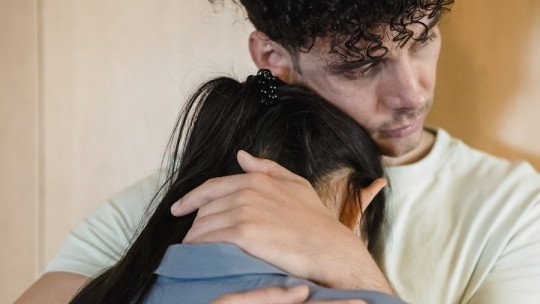The beginning of the end of a relationship may be happening without us even realizing it ; Many times, the first signs of change are subtle. Normally it is after the breakup when we try to remember and understand what has happened, the way in which events have happened to the point of producing an experience as complicated to face as a breakup. Thinking about our past relationships in retrospect does not rebuild them, but it helps us heal wounds.
Now, in addition to thinking about breakups in the past, We can also try to predict them, recognize their first manifestations effectively Having the option of knowing if we are in a breakup process can be very useful to evaluate the state of health of the relationship and, also, to see the relationship you have with your partner in perspective.
A scale on the stages of the breakup
Of course, it cannot be said that there is a series of phases whose first stages make us fall irremediably into a spiral whose only possible end is a breakup, but it is possible to distinguish different situations that make us more or less inclined to consider leaving. to our partner.
To do this, a team of psychologists from the University of Tennessee led by Kathrin Ritter have developed a scale that outlines the 5 phases that relationships go through that are more likely to be ending. The name of this tool is Stages of Change in Relationship Status (SOCRS) and can be very useful in both couples therapy, and is based on James Prochaska’s theory of change.
The SOCRS was initially developed to examine the extent to which people involved in online dating based on fear and violence were close to ending these toxic relationships. However, it has also been shown to be reliable in assessing the possibilities of ending a relationship whether or not there is physical or psychological violence in it.
This scale was designed after giving questionnaires with 83 items to a series of people and deciding what kinds of questions were most used or meaningful to describe the state of the relationship. After this process, a simplified version of these questionnaires was created.
Is this scale effective?
To test its effectiveness, this research team had a series of young and partnered people fill out the SOCRS questionnaires. Two months later, these people had to fill out the questionnaire again. In this way, after 2 months, it could be verified whether people who, according to the scale, were in an advanced phase of breakup at the first moment, were more likely to have broken up with their relationship or to be about to do so after 2 months.. The volunteers who participated in the study were young people around 20 years old, so it was not strange that their relationships lasted an average of a year and that, after 2 months, many couples had broken up.
The results showed that, indeed, The scale was useful for estimating the chances that the relationship would end in the near future depending on which of the 5 phases each person was in. In addition, a worrying incidence of relationships with physical or verbal violence was observed: 79% of people admitted to having committed acts of physical or verbal violence against their partner at some point.
The 5 stages of breakup according to SOCRS
These are the 5 phases that couples go through when they break up. Where is your relationship?
Factor 1: Precontemplation
In this phase the person You are not aware of having any special problems in your relationship The scale items that correspond to this phase are these:
1. I am happy with my relationship as it is.
2. My relationship is fine, there is no need to change it.
3. My relationship is not that bad.
4. I don’t need to do anything about my relationship.
Factor 2: Contemplation
In this phase the person begins to think about aspects of their relationship that should change Its items are these:
5. Sometimes I think I should end my relationship.
6. I think my relationship is not healthy for me.
7. I’m starting to see that my relationship is a problem.
8. I am beginning to notice the harmful effect of my relationship.
Factor 3: Preparation
In this phase the person You have already made the decision to end the relationship The items that define this stage are the following:
9. Although it is difficult to end my relationship, I am making plans to do so anyway.
10. I have started working on ending the relationship, but I need some help.
11. I will try to end my relationship within the next month.
12. I will try to end my relationship very soon, but I am not sure what the best way to do it is.
Factor 4: Action
In this phase the person You have already begun to execute your plans without making excuses or postponing your goals The items are:
13. I have told my partner that I want to end the relationship.
14. I talk less with my partner when we are alone.
15. I have started spending more time with other people and less with my partner.
16. I notice that I think less and less about my partner.
Factor 5: Maintenance
In this phase the person acts in a manner consistent with the purpose of their relationship, transforming it into an everyday reality The items are:
17. I have changed my daily routine to avoid any relationship with my partner.
18. I avoid places where I know I will see my partner.
19. I have put away items that belong to my partner, or taken steps to get rid of items that remind me of this person.
20. I will never go back to my partner.









